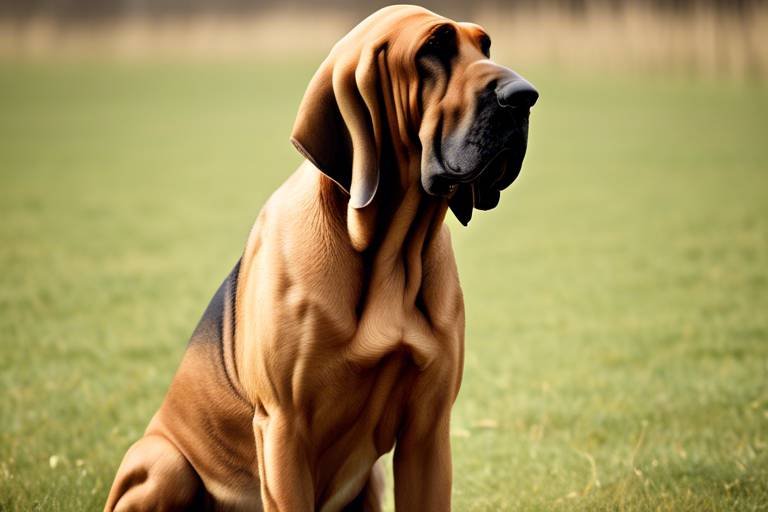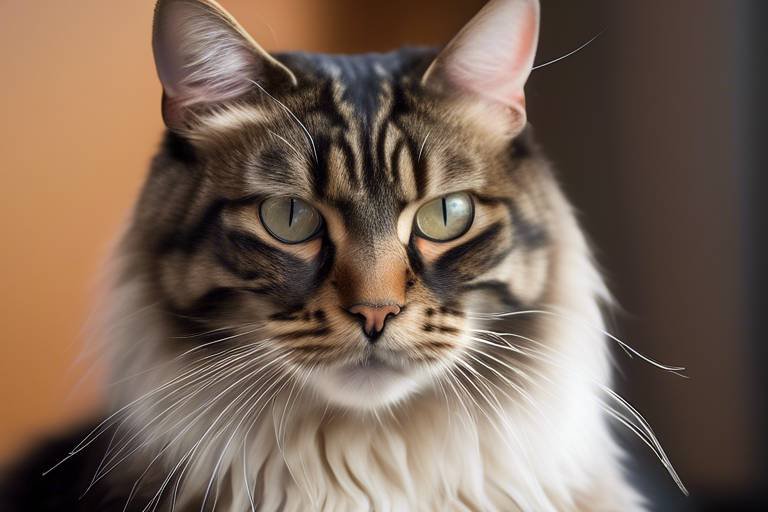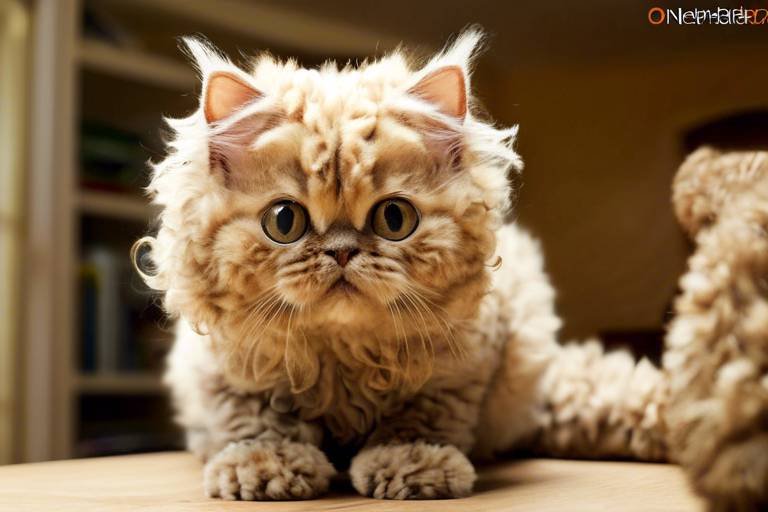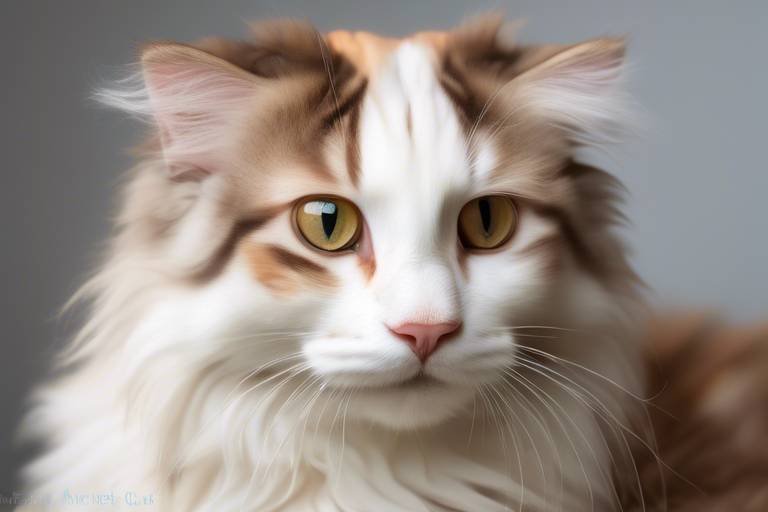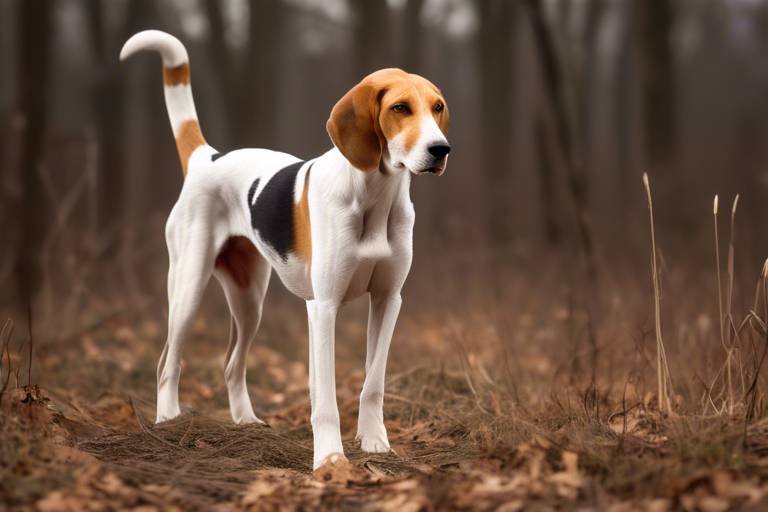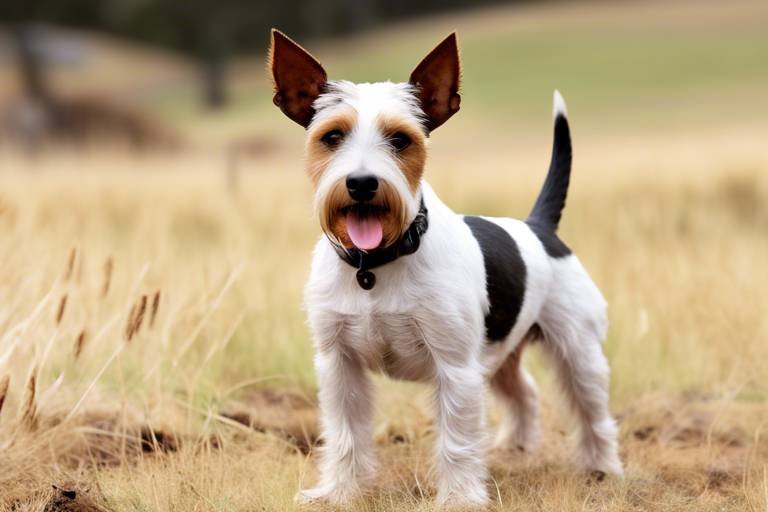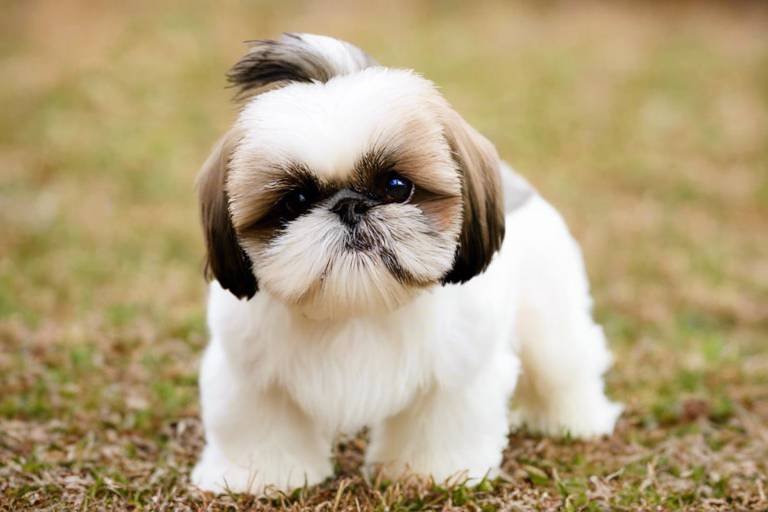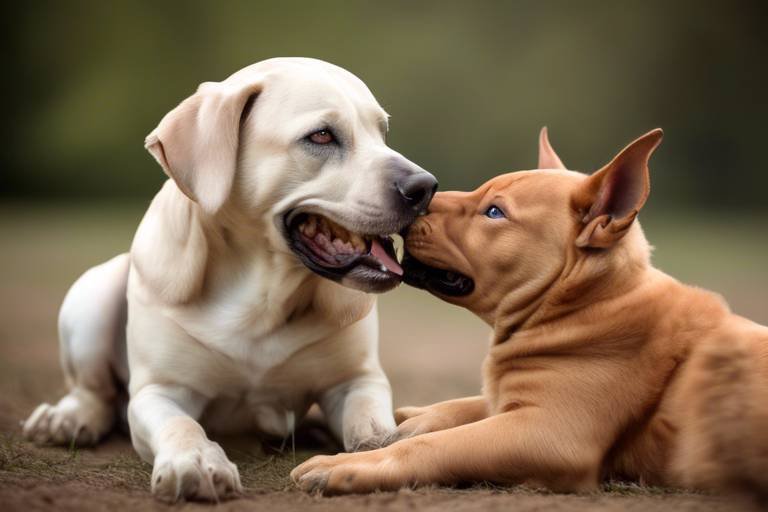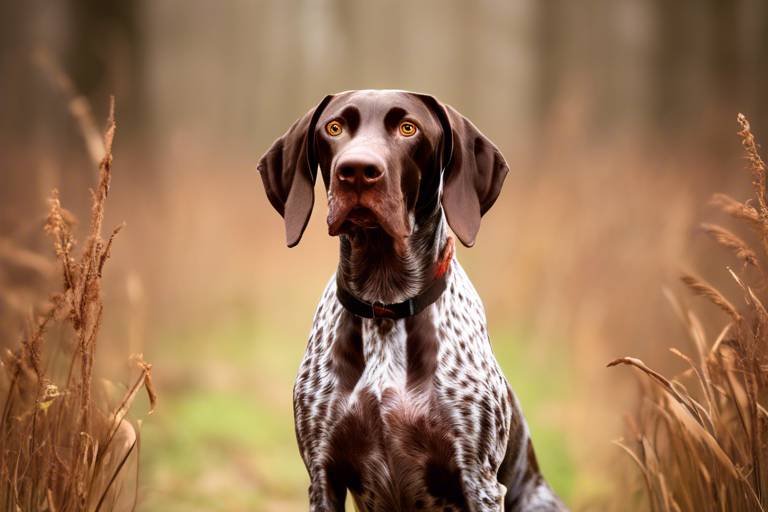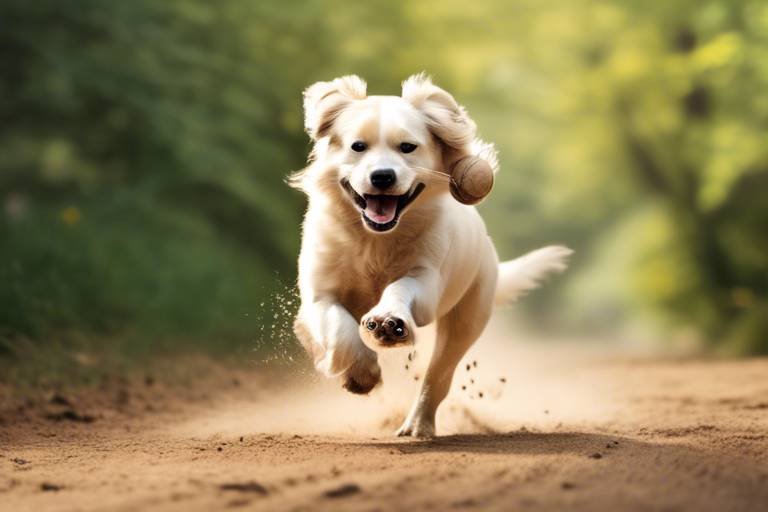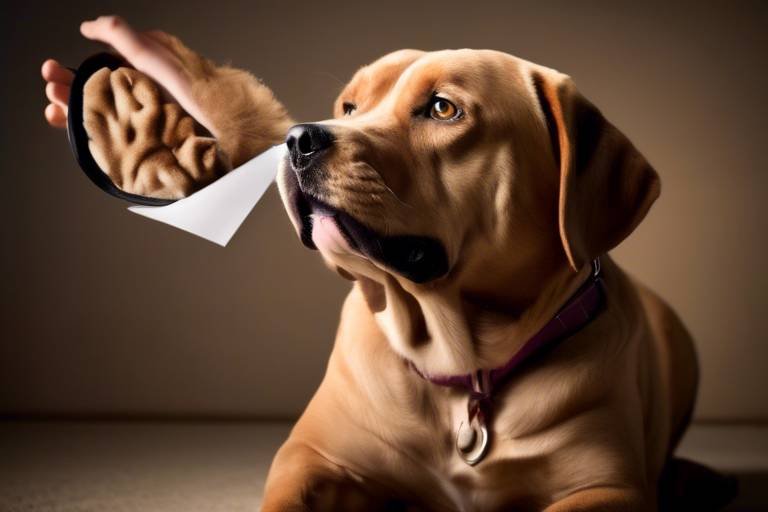Understanding the Temperament of the Bloodhound
The Bloodhound, with its soulful eyes and droopy ears, is more than just a striking breed; it embodies a unique blend of traits that make it both a remarkable companion and a skilled working dog. Known for their extraordinary sense of smell, these dogs are often employed in search and rescue missions, tracking down missing persons, and even in law enforcement. But what truly sets them apart is their temperament. Understanding the nuances of a Bloodhound's behavior can help potential owners appreciate not just their abilities, but also their needs and personality.
At the heart of a Bloodhound's temperament lies their affectionate nature. These dogs are known for their loyalty and strong bonds with their families. They thrive on companionship and often seek out human interaction, making them excellent family pets. However, their affectionate disposition comes with a need for socialization and engagement. Bloodhounds tend to be friendly and gentle, but without proper exposure to various environments and situations, they may develop anxiety or behavioral issues. Therefore, early socialization is crucial in shaping a well-rounded and confident dog.
Another defining characteristic of the Bloodhound's temperament is their independence. While they are eager to please their owners, they also possess a stubborn streak. This independence can sometimes be mistaken for disobedience, especially when they are distracted by a captivating scent. It’s essential for owners to understand that this breed was originally developed for tracking, and their powerful noses can lead them on adventures of their own. As such, patience and consistency in training are vital. Bloodhounds respond best to positive reinforcement techniques, which help foster a trusting relationship between the dog and its owner.
In addition to their affectionate and independent traits, Bloodhounds are known for their curiosity. Their inquisitive nature drives them to explore their surroundings, which can sometimes lead to mischief if they are not adequately stimulated. Providing mental and physical exercises is crucial for keeping a Bloodhound happy and healthy. Activities such as scent games, interactive toys, and regular walks not only satisfy their curiosity but also prevent boredom, which can lead to destructive behaviors.
When it comes to interactions with other dogs, Bloodhounds generally have a friendly demeanor. However, their strong hunting instincts can kick in, leading to potential chasing if they spot smaller animals. Therefore, understanding their behavior in social settings is important. Owners should work on training their Bloodhounds to respond to commands and practice recall to ensure safe interactions during playdates or at the dog park.
Overall, the temperament of the Bloodhound is a fascinating mix of affection, independence, curiosity, and a knack for tracking scents. These traits not only contribute to their role as working dogs but also enhance their capabilities as family companions. By understanding these characteristics, potential owners can better prepare for the joys and challenges that come with welcoming a Bloodhound into their lives.
- Are Bloodhounds good with children? Yes, Bloodhounds are generally gentle and affectionate with children, making them great family pets.
- How much exercise do Bloodhounds need? Bloodhounds require regular exercise, ideally 1 to 2 hours per day, to keep them physically and mentally stimulated.
- Do Bloodhounds shed a lot? Bloodhounds do shed, but regular grooming can help manage their coat and minimize shedding.
- Are Bloodhounds easy to train? Training Bloodhounds can be challenging due to their independent nature, but using positive reinforcement techniques can yield great results.
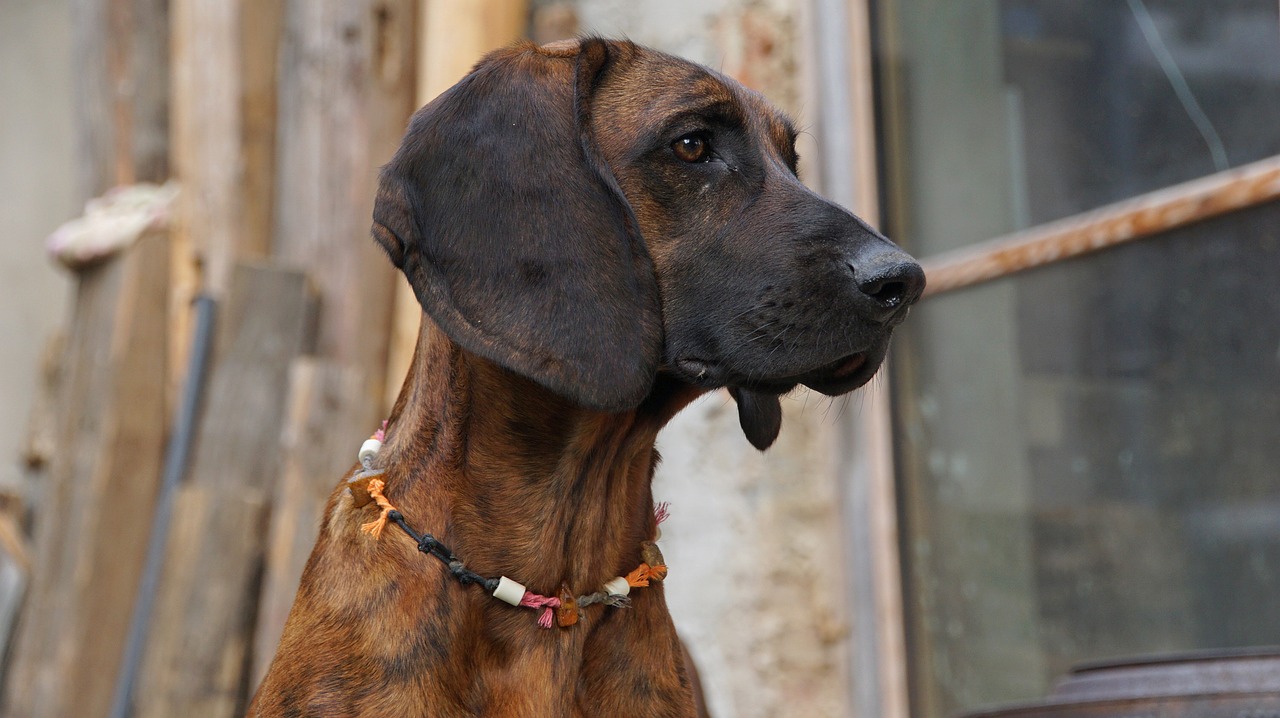
Origins of the Bloodhound
The Bloodhound, renowned for its incredible sense of smell, boasts a rich history that dates back to medieval Europe. These remarkable dogs were originally bred by monks in the Ardennes region of Belgium, primarily for their tracking abilities. The term "Bloodhound" is believed to have originated from the phrase "blooded hound," which indicates their noble lineage and the high regard in which they were held. But what makes their origins so fascinating? Well, these dogs were not just companions; they were essential tools for hunting and tracking game, often used in royal courts and by nobility.
As the centuries passed, Bloodhounds made their way across Europe, gaining popularity in various regions. They were particularly favored in England, where they became a staple in hunting parties. Their exceptional olfactory senses allowed them to track scents over long distances, which made them invaluable during hunts. Imagine a dog so skilled that it could follow a scent trail for days! This unique ability not only solidified their place in hunting but also in law enforcement, where they were used to track down criminals and missing persons.
Interestingly, the Bloodhound's temperament is closely linked to its history. Bred for endurance and a strong work ethic, these dogs possess a gentle yet determined demeanor. Their innate desire to please their handlers and their strong sense of loyalty can be traced back to their roots as hunting companions. So, how does this history impact the Bloodhound we know today? Their temperament is characterized by a blend of independence and affection, making them both excellent working dogs and loving family pets.
To further highlight the Bloodhound's origins, here’s a quick table summarizing their historical significance:
| Time Period | Location | Significance |
|---|---|---|
| Medieval Times | Belgium | Originally bred by monks for tracking |
| 16th Century | England | Gained popularity in hunting and law enforcement |
| Modern Era | Worldwide | Used in search and rescue operations |
In conclusion, the origins of the Bloodhound are not just a tale of noble breeding; they are a testament to the incredible bond between humans and dogs. From their medieval beginnings to their modern roles in society, Bloodhounds continue to capture our hearts with their unique temperament and extraordinary abilities. As we delve deeper into their characteristics, it becomes clear that understanding their history is key to appreciating the remarkable nature of this breed.
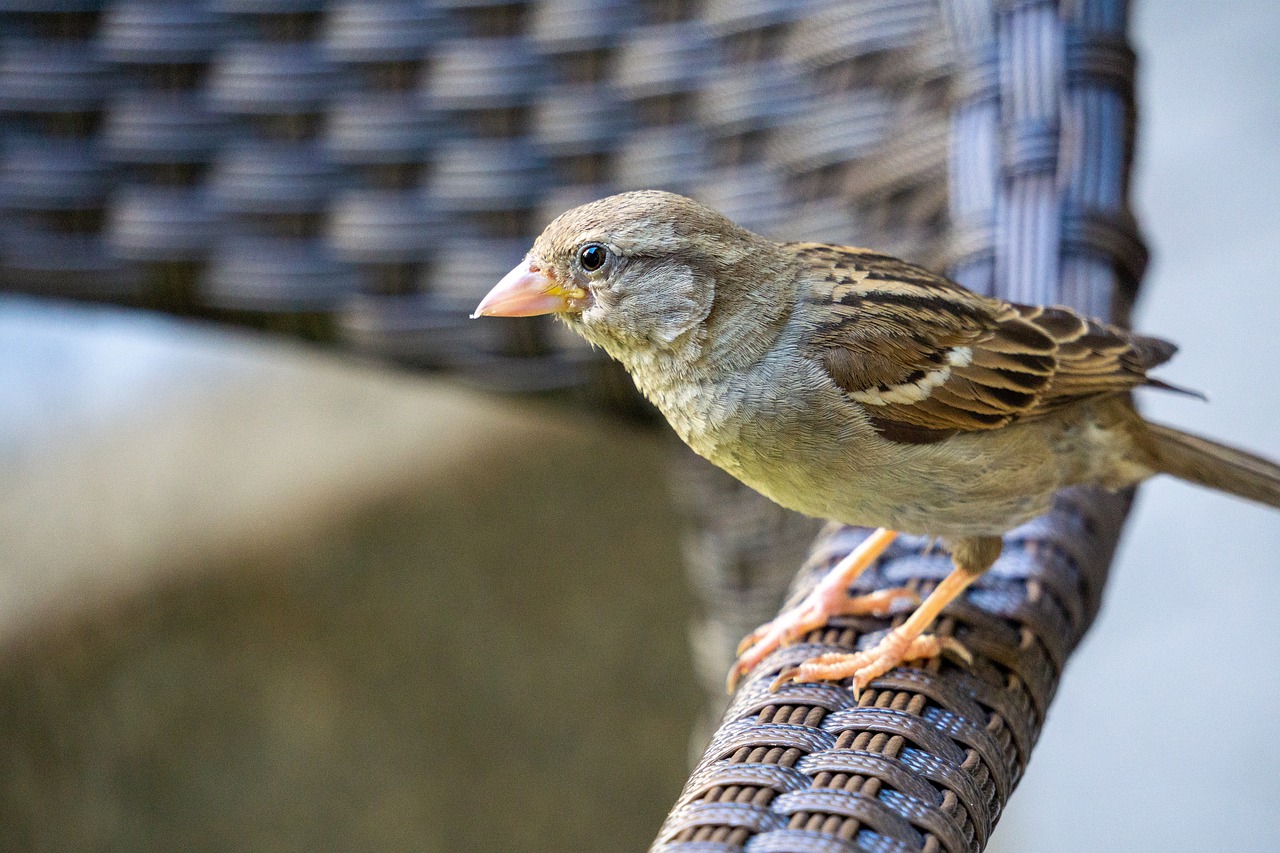
Physical Characteristics
The Bloodhound is a breed that captivates with its unique and striking physical traits. These dogs are characterized by their droopy ears and loose skin, which not only add to their charm but also serve a functional purpose in their incredible scent-tracking abilities. The combination of these features creates a distinctive silhouette that is instantly recognizable and beloved by dog enthusiasts around the world.
When it comes to size, Bloodhounds are undeniably large and robust. Their muscular build contributes to their strength and stamina, making them excellent working dogs. Understanding their size is essential for potential owners, as it influences their behavior, energy levels, and suitability for various living environments. A Bloodhound's physicality can be compared to that of a gentle giant; they may be large, but their affectionate nature makes them wonderful companions.
Typically, Bloodhounds stand between 23 to 27 inches tall at the shoulder and can weigh anywhere from 80 to 110 pounds. This substantial size necessitates ample space for them to thrive. Whether it's a spacious backyard or frequent trips to the park, ensuring they have room to roam is crucial for their happiness. Their build is not just for show; it plays a vital role in their ability to perform tasks such as tracking scents over long distances.
Here’s a quick overview of the typical weight and height of Bloodhounds:
| Measurement | Range |
|---|---|
| Height | 23 - 27 inches |
| Weight | 80 - 110 pounds |
The coat of a Bloodhound is another noteworthy aspect of their physical characteristics. They have a short, dense coat that comes in a variety of colors, including black and tan, liver and tan, and red. This variety not only adds to their aesthetic appeal but also impacts their grooming needs. A short coat means less shedding, but regular grooming is still necessary to keep their skin healthy and free of debris. Additionally, understanding their coat type is essential for potential owners, as it can influence the overall health and comfort of the dog.
In summary, the Bloodhound's physical characteristics are not just about appearance; they are deeply intertwined with the breed's functionality and temperament. Their size, build, and unique features all contribute to their role as both companions and working dogs. By appreciating these traits, potential owners can better prepare for the responsibilities that come with welcoming a Bloodhound into their home.
- What is the average lifespan of a Bloodhound? Bloodhounds typically live between 10 to 12 years.
- Do Bloodhounds require a lot of exercise? Yes, they need regular exercise to maintain their physical and mental health.
- Are Bloodhounds good with children? Yes, they are known to be gentle and affectionate with children.
- How often should I groom my Bloodhound? Regular grooming is recommended, but their short coat means less frequent grooming compared to long-haired breeds.
Size and Build
The Bloodhound is not just any dog; they are a *robust* and *muscular* breed that commands attention with their impressive size. Typically, a fully grown Bloodhound will weigh between 80 to 110 pounds and stand about 23 to 27 inches tall at the shoulder. This significant size makes them one of the larger breeds, and it’s essential for potential owners to consider both the space they have available and the physical demands of owning such a large dog. Imagine having a gentle giant by your side, but also one that requires ample room to roam and play!
Moreover, the Bloodhound's build is designed for endurance and strength. They possess a *deep chest* and a *wide back*, which contribute to their ability to track scents over long distances. Their strong legs provide the necessary power to chase after scents, making them exceptional working dogs. However, this also means that they require regular exercise to maintain their muscle tone and overall health. If you think about it, owning a Bloodhound is somewhat like having a *personal trainer*—they need daily walks, playtime, and mental stimulation to keep them happy and healthy.
In terms of their physical appearance, Bloodhounds have a unique charm that is hard to resist. Their *droopy ears* and *loose skin* give them a distinctive look, often making them the center of attention wherever they go. These features are not just for show; they serve a purpose in enhancing their scenting abilities. The loose skin helps to trap scent particles, while their long ears help to sweep up scents from the ground. It’s a fascinating blend of form and function that makes the Bloodhound truly special.
When considering the size and build of a Bloodhound, it’s also important to think about their living environment. While they can adapt to various situations, they thrive best in homes where they have space to move around freely. Whether it’s a large backyard or nearby parks to explore, providing them with enough room to stretch their legs is crucial. After all, a happy Bloodhound is one that can roam and play to their heart's content!
Weight and Height
The Bloodhound is a breed that commands attention with its impressive size and stature. Typically, these dogs weigh between 80 to 110 pounds and stand about 23 to 27 inches tall at the shoulder. This robust build is not just for show; it plays a significant role in their functionality as scent trackers and hunters. When considering bringing a Bloodhound into your home, it's essential to understand how their size can affect your living situation and lifestyle.
For potential owners, the weight and height of a Bloodhound can have practical implications. For instance, a larger dog requires more space to move comfortably. If you live in an apartment, you may need to reconsider your choice or ensure you have ample outdoor access for exercise. Additionally, the size of a Bloodhound means they will require a sturdy, well-constructed crate and a robust leash for walks.
To give you a clearer picture, here's a quick overview of their weight and height:
| Measurement | Range |
|---|---|
| Weight | 80 - 110 lbs |
| Height | 23 - 27 inches |
Moreover, the physical attributes of a Bloodhound are not just about size; they also come with a unique set of features that enhance their abilities. Their long, droopy ears and loose skin help trap scent particles, making them exceptional at tracking. This means that while their size may seem intimidating, it also serves a critical purpose in their role as working dogs. Understanding these aspects of their weight and height can help you appreciate the breed's capabilities and make informed decisions about their care and training.
In conclusion, being aware of a Bloodhound's weight and height is vital for potential owners. It influences their living conditions, care requirements, and training approaches. So, if you're ready to welcome a Bloodhound into your life, ensure you have the space and resources to accommodate their needs!
- What is the average lifespan of a Bloodhound? Bloodhounds typically live between 10 to 12 years.
- Do Bloodhounds shed a lot? Yes, they do shed, especially during seasonal changes, so regular grooming is important.
- Are Bloodhounds good with children? Generally, Bloodhounds are affectionate and gentle, making them good companions for children.
- How much exercise do Bloodhounds need? Bloodhounds require at least 1 hour of exercise daily to stay healthy and happy.
Coat and Color
The Bloodhound's coat is one of its most distinctive features, and it plays a significant role in its overall appearance and health. These dogs are adorned with a short, dense coat that not only adds to their charm but also serves practical purposes. The texture of their coat helps protect them from the elements while also being easy to maintain. When it comes to color, Bloodhounds come in a variety of striking combinations, which can include:
- Black and Tan
- Liver and Tan
- Red
Each color variation has its own appeal, but regardless of the color, the Bloodhound's coat is typically characterized by its loose skin and wrinkles, particularly around the face. This unique feature not only makes them look adorable but also contributes to their scenting abilities. The folds of skin are believed to help trap scent particles, enhancing their already impressive olfactory skills. However, with this beautiful coat comes the responsibility of grooming.
While Bloodhounds do not require extensive grooming due to their short coat, regular brushing is essential to minimize shedding and to keep their skin healthy. Their loose skin can be prone to moisture retention, especially in the folds, making it crucial for owners to check these areas regularly for any signs of irritation or infection. A simple routine of brushing a couple of times a week, combined with regular baths, will keep your Bloodhound looking and feeling its best.
In summary, the Bloodhound's coat and color are not just about aesthetics; they play a vital role in the dog's health and functionality. Understanding these aspects can help potential owners appreciate the breed's unique characteristics and ensure they provide the best care possible.
- How often should I groom my Bloodhound?
It is recommended to brush your Bloodhound at least once a week to manage shedding and maintain healthy skin. - Are Bloodhounds hypoallergenic?
No, Bloodhounds are not hypoallergenic. They do shed, which may trigger allergies in sensitive individuals. - What colors do Bloodhounds come in?
Bloodhounds can be found in several color combinations, including black and tan, liver and tan, and red.
Behavioral Traits
The Bloodhound is a breed that boasts a unique blend of characteristics that make them not only fascinating companions but also exceptional working dogs. One of the most notable behavioral traits of Bloodhounds is their remarkable scent-tracking ability. This breed has an extraordinary sense of smell, which is often likened to having a built-in GPS for scents. When they catch a whiff of something interesting, their instincts kick in, and they can become quite single-minded in their pursuit. This can be both a blessing and a challenge for owners, as it may lead to them following a scent trail with little regard for other distractions.
Another defining trait of Bloodhounds is their affectionate nature. These dogs are known for their loyalty and love towards their families. They thrive on human companionship and often seek to be involved in family activities. This makes them excellent family pets, as they are gentle and patient with children. However, it’s essential for potential owners to understand that their affectionate disposition means they may experience separation anxiety if left alone for extended periods. Just like a child who feels abandoned, a Bloodhound may express their distress through barking or destructive behavior.
In terms of temperament, Bloodhounds are generally easygoing and adaptable, but they can also exhibit a stubborn streak. This independent spirit can sometimes lead to challenges during training sessions. It’s important for owners to approach training with patience and consistency. Think of it like trying to convince a teenager to clean their room; positive reinforcement works wonders, but you might have to remind them a few times! Bloodhounds respond best to training that incorporates rewards and praise, which helps to motivate them and build a trusting relationship with their owner.
Socialization is another critical aspect of a Bloodhound's behavioral development. Early exposure to different environments, people, and other animals is vital for helping them develop into well-rounded adults. Without proper socialization, these dogs may become overly cautious or even aggressive in unfamiliar situations. Imagine a child who has never been to a playground; they might feel overwhelmed when they finally get there. Similarly, a Bloodhound that hasn't been socialized may react unpredictably when faced with new experiences.
When it comes to interactions with other dogs, Bloodhounds usually get along well, but their strong hunting instincts can lead to some playful chases. They may not always recognize the difference between playtime and serious business, which can be amusing yet potentially risky. Owners should be prepared to manage their Bloodhound's impulses, especially in off-leash situations. Think of it like a game of tag; they’re always ready to chase, but knowing when to call them back is crucial for safety.
In summary, the behavioral traits of Bloodhounds make them both captivating and complex. Their exceptional scent-tracking abilities, affectionate nature, stubbornness, and need for socialization all play significant roles in their temperament. Understanding these traits is essential for anyone considering bringing a Bloodhound into their home. After all, owning a Bloodhound is not just about having a dog; it’s about welcoming a loyal companion who will fill your life with adventure, love, and a few delightful surprises along the way!
- What is the best way to train a Bloodhound?
The best way to train a Bloodhound is through positive reinforcement techniques. Use treats and praise to encourage good behavior, and be patient as they can be a bit stubborn.
- Are Bloodhounds good with children?
Yes, Bloodhounds are generally very gentle and affectionate with children, making them great family pets.
- How much exercise does a Bloodhound need?
Bloodhounds require regular exercise to stay healthy and happy. Daily walks and playtime are essential to prevent boredom and behavioral issues.
- What are common health issues in Bloodhounds?
Common health issues in Bloodhounds include hip dysplasia and ear infections. Regular vet check-ups are important for maintaining their health.

Socialization Needs
Socialization is a crucial aspect of raising a well-adjusted Bloodhound. These dogs, with their unique blend of curiosity and strong instincts, thrive when exposed to a variety of environments and experiences. Early socialization helps them develop into confident and well-rounded companions. Imagine a young Bloodhound, tail wagging and nose twitching, exploring the world around them—this is the essence of a properly socialized dog!
When considering socialization for your Bloodhound, it’s essential to introduce them to different people, places, and situations. This exposure can significantly reduce the likelihood of behavioral issues in adulthood. For instance, a Bloodhound that has met a variety of people and animals during their formative months will be less likely to react fearfully or aggressively later on. Think of it as building a foundation; the more diverse the experiences, the sturdier the structure of their temperament.
Here are some key areas to focus on during the socialization process:
- People: Introduce your Bloodhound to individuals of all ages, sizes, and backgrounds. This helps them learn to trust and accept new friends.
- Other Animals: Regular interactions with other dogs and pets can help Bloodhounds develop a friendly demeanor and reduce their instinct to chase.
- Environments: Take your Bloodhound to parks, busy streets, and other public spaces. The varied sights, sounds, and smells will enrich their experiences.
- Training Classes: Enrolling your Bloodhound in obedience classes not only aids in training but also provides a structured environment for socialization.
It’s important to remember that socialization isn’t a one-time event; it’s an ongoing process. Continuous exposure to new experiences throughout their lives will help maintain their social skills and adaptability. After all, a well-socialized Bloodhound is not just a happier dog; they are also a more reliable companion, ready to take on the world with you.
Q: How early should I start socializing my Bloodhound?
A: Ideally, socialization should begin as early as possible, typically around 7 to 8 weeks of age. The critical period for socialization lasts until about 16 weeks, but continued exposure throughout their life is beneficial.
Q: What are some signs that my Bloodhound needs more socialization?
A: If your Bloodhound shows signs of fear, aggression, or excessive barking around new people or situations, it may indicate a need for more socialization. Look for signs of anxiety, such as cowering or hiding.
Q: Can I over-socialize my Bloodhound?
A: While it’s essential to provide a variety of experiences, over-socialization can lead to overstimulation. Monitor your Bloodhound’s reactions and provide breaks if they seem overwhelmed.
Q: Is socialization different for older Bloodhounds?
A: Yes, older Bloodhounds may require a more gradual approach to socialization. Start slowly and allow them to acclimate to new experiences at their own pace.
Interactions with Other Dogs
When it comes to interacting with other dogs, Bloodhounds are generally known for their friendly and sociable demeanor. Their natural instincts as scent hounds can sometimes complicate these interactions, as their powerful noses often lead them to chase after intriguing scents. This chasing behavior is more pronounced in environments where they encounter other dogs, especially if those dogs are smaller or exhibit a lot of movement. It's important for Bloodhound owners to recognize this tendency and manage it accordingly.
Socialization plays a pivotal role in ensuring that Bloodhounds develop healthy relationships with other dogs. Early exposure to different breeds, sizes, and temperaments can help mitigate any potential behavioral issues that may arise from their strong hunting instincts. Taking a Bloodhound to dog parks or arranging playdates with other dogs can be beneficial, allowing them to learn appropriate social cues and behaviors. However, supervision is key, especially in the beginning, to ensure that play remains friendly and does not escalate into chasing or roughhousing.
Here are some essential tips for fostering positive interactions between Bloodhounds and other dogs:
- Supervise Playtime: Always keep an eye on your Bloodhound during playdates to ensure that interactions remain safe and enjoyable.
- Encourage Positive Behavior: Reward your Bloodhound with treats and praise when they interact gently with other dogs.
- Be Mindful of Space: Bloodhounds need room to roam, so ensure that play areas are spacious enough to accommodate their size and energy levels.
It's also worth noting that Bloodhounds can form strong bonds with other dogs, especially if they are raised together or have frequent interactions. Their affectionate nature often leads them to be protective and loyal companions to their canine friends. However, if a Bloodhound has not been properly socialized, they may display signs of dominance or aggression, particularly towards unfamiliar dogs. In such cases, it's crucial to seek the help of a professional trainer who understands the breed's unique temperament.
In summary, while Bloodhounds can be wonderful companions to other dogs, their interactions require careful management and socialization. By providing positive experiences and understanding their instincts, owners can ensure that their Bloodhound has fulfilling relationships with other dogs, contributing to their overall happiness and well-being.
Q: Are Bloodhounds good with other dogs?
A: Yes, Bloodhounds are generally friendly and sociable with other dogs, but early socialization is important to prevent chasing behaviors.
Q: What should I do if my Bloodhound chases other dogs?
A: It's essential to supervise their interactions and redirect their attention with commands or treats to discourage chasing.
Q: Can Bloodhounds get along with smaller dogs?
A: Bloodhounds can get along with smaller dogs, but caution is advised, as their strong hunting instincts may lead them to chase.
Q: How can I help my Bloodhound socialize with other dogs?
A: Arrange playdates, visit dog parks, and provide positive reinforcement for good behavior during interactions to help your Bloodhound socialize.
Family Dynamics
When it comes to family dynamics, Bloodhounds are often the unsung heroes. These dogs are not just loyal companions; they are also incredibly affectionate and form strong bonds with their human families. Imagine coming home after a long day, and there they are, wagging their tails like they just won the lottery! This natural inclination to love and protect makes them fantastic family pets.
Bloodhounds thrive in a family setting where they can be a part of everyday life. They are known to be gentle with children, often displaying a patient demeanor that is perfect for a bustling household. However, just like any other breed, they require proper introduction to young family members. Teaching kids how to interact with these large, droopy-eared pals can prevent any accidental injuries, especially when excitement levels are high.
Moreover, Bloodhounds possess a natural curiosity and a strong sense of smell, which can sometimes lead them to follow their noses into mischief. It’s essential for families to engage in activities that stimulate both their minds and bodies. Regular family walks, playtime in the yard, or even participating in agility training can help channel their energy positively. This not only keeps them healthy but also strengthens the bond between the dog and the family.
Another aspect to consider in family dynamics is the Bloodhound's role as a watchdog. While they are not aggressive, their size and deep bark can be quite intimidating to strangers. This protective nature can make them excellent guardians for your home. However, it’s crucial to socialize them early on to ensure they can differentiate between a friendly visitor and a potential threat. Proper socialization helps them feel comfortable around people and other pets, creating a harmonious environment.
In summary, Bloodhounds can significantly enrich family life with their affectionate nature and loyalty. They require love, attention, and proper training to thrive within the family unit. By understanding their needs and incorporating them into daily family activities, you can ensure that your Bloodhound remains a happy and well-adjusted member of the household.
- Are Bloodhounds good with children? Yes, Bloodhounds are generally gentle and patient with children, making them suitable family pets.
- How much exercise do Bloodhounds need? Bloodhounds require regular exercise, ideally around 60 minutes a day, to keep them healthy and happy.
- Can Bloodhounds be left alone for long periods? Bloodhounds do not like to be left alone for extended periods as they thrive on companionship.
- Do Bloodhounds have a strong scent drive? Yes, Bloodhounds have an exceptional sense of smell and a strong instinct to follow scents, which can sometimes lead to chasing.
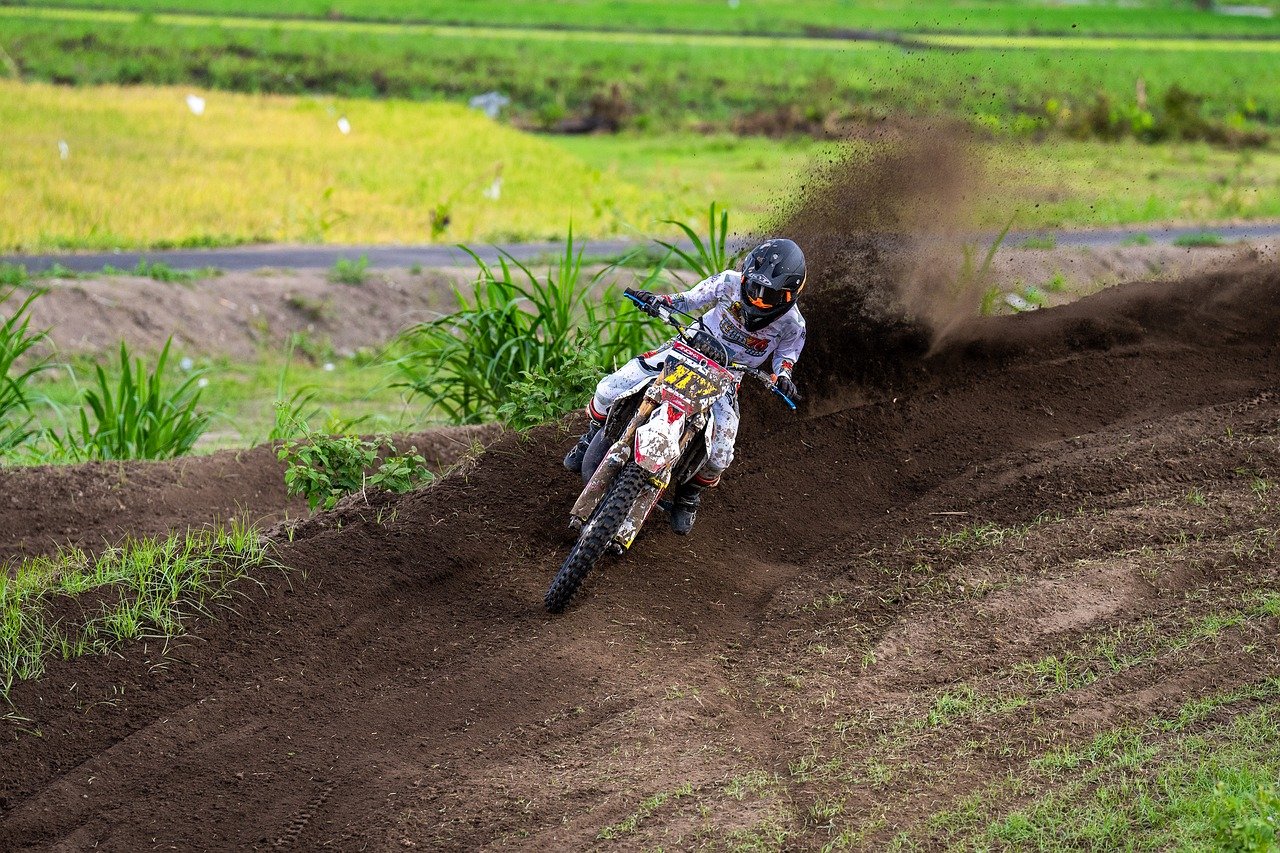
Training Considerations
Training a Bloodhound can be both an exciting and challenging journey. These dogs are known for their incredible sense of smell and independent nature, which means they often march to the beat of their own drum. While their intelligence is a double-edged sword, it’s essential to approach their training with the right mindset and techniques. Patience and consistency are your best friends here. Think of training a Bloodhound like trying to solve a complex puzzle; it requires time, effort, and a bit of creativity to fit all the pieces together.
One of the most effective methods for training a Bloodhound is through positive reinforcement. This technique involves rewarding your dog for good behavior, which not only encourages them to repeat those behaviors but also strengthens the bond between you and your furry friend. Imagine your Bloodhound as a student in a classroom; when they get praised for answering correctly, they’re more likely to participate enthusiastically in the future. Similarly, using treats, praise, or playtime as rewards can make training sessions more enjoyable and productive.
However, it’s important to recognize that Bloodhounds can be a bit stubborn at times. Their strong scent drive is a significant part of their personality, and it can lead to distractions during training. To tackle this, keep training sessions short and engaging. Incorporate scent games or tracking exercises that align with their natural instincts. For instance, hide treats around your yard and encourage your Bloodhound to sniff them out. This not only caters to their hunting instincts but also makes training feel like a fun game rather than a chore.
Here’s a quick overview of some common training challenges you might face with a Bloodhound:
| Challenge | Solution |
|---|---|
| Stubbornness | Use positive reinforcement and remain patient. Short, engaging sessions work best. |
| Distraction from scents | Incorporate scent-related games to keep them focused and engaged. |
| Independence | Establish a strong bond through consistent training and rewards. |
Furthermore, socialization is a crucial aspect of training. Exposing your Bloodhound to various environments, people, and other animals from a young age helps them develop into well-rounded adults. Think of this like teaching a child about the world; the more experiences they have, the better equipped they are to handle different situations. Make sure to introduce them to new experiences gradually, ensuring that they feel safe and secure during these interactions.
In summary, training a Bloodhound is a rewarding endeavor that requires dedication and understanding. By using positive reinforcement, being aware of their unique challenges, and focusing on socialization, you can cultivate a well-behaved and happy companion. Remember, every dog is an individual, and what works for one might not work for another. So, be flexible in your approach, and most importantly, enjoy the journey of training your incredible Bloodhound!
- How long does it take to train a Bloodhound? Training can vary based on the individual dog, but consistency and patience are key. Generally, you should expect a few months to establish basic commands.
- Are Bloodhounds easy to train? While they are intelligent, their independent nature can make them challenging. Positive reinforcement is the best approach.
- What is the best age to start training? Starting early, around 8 weeks old, is ideal for socialization and basic training.
- How often should I train my Bloodhound? Short, daily training sessions are more effective than infrequent, long sessions. Aim for 10-15 minutes each day.
Positive Reinforcement Techniques
Training a Bloodhound can be an incredibly rewarding experience, but it requires a special approach that acknowledges their unique temperament. One of the most effective methods is positive reinforcement. This technique focuses on rewarding desired behaviors rather than punishing unwanted ones, creating a more enjoyable and productive training environment.
Imagine your Bloodhound as a curious detective, always on the lookout for clues. When they successfully follow commands or display good behavior, rewarding them with treats, praise, or playtime reinforces that behavior. This not only encourages them to repeat those actions but also strengthens the bond between you and your furry friend.
Effective positive reinforcement can be broken down into several key components:
- Timing: Immediate rewards are crucial. When your Bloodhound performs a desired action, provide a reward right away. This helps them associate the behavior with the positive outcome.
- Consistency: Be consistent with your commands and rewards. This helps your dog understand what is expected of them and reduces confusion.
- Variety: Mix up your rewards to keep your Bloodhound engaged. Use a combination of treats, toys, and verbal praise to maintain their interest in training sessions.
Incorporating these elements into your training routine can make a significant difference. For instance, during a walk, if your Bloodhound responds to a recall command, immediately reward them with a treat and enthusiastic praise. This positive feedback loop encourages them to listen to you more closely in the future.
Another effective strategy is to use clicker training. This involves using a clicker to mark the exact moment your Bloodhound performs the desired behavior, followed by a reward. The sound of the clicker helps the dog understand exactly what action earned them the reward, making it a powerful tool for training.
While positive reinforcement is highly effective, it's essential to remember that every Bloodhound is unique. Some may respond better to certain types of rewards than others. It's all about experimenting and finding what resonates with your dog. For example, some Bloodhounds may be more motivated by food, while others might prefer playtime with their favorite toy.
In conclusion, using positive reinforcement techniques not only aids in effective training but also enhances the relationship between you and your Bloodhound. By focusing on rewarding good behavior, you foster an environment of trust and cooperation, paving the way for a well-behaved and happy companion.
- What is positive reinforcement? Positive reinforcement is a training method that rewards desired behaviors to encourage their repetition.
- How can I effectively use treats in training? Always reward your Bloodhound immediately after they perform the desired behavior to create a strong association.
- Can I use toys as rewards? Absolutely! Many dogs respond well to toys, so feel free to incorporate them into your training sessions.
- What if my Bloodhound doesn't respond to rewards? It may take time to find the right motivator. Experiment with different types of rewards and be patient.
Common Challenges
Owning a Bloodhound can be a rewarding experience, but it's important to be aware of the that come with this unique breed. One of the most notable challenges is their stubbornness. Bloodhounds are known for their independent nature, which can sometimes make training feel like an uphill battle. Imagine trying to convince a toddler to eat their vegetables; that’s often what it feels like when you're trying to get a Bloodhound to follow commands. Their strong scent drive can also lead them to become easily distracted, especially when they catch a whiff of something interesting. This can make walks and outdoor activities a test of patience.
Another challenge is their tendency to follow their nose. Bloodhounds have an extraordinary sense of smell, which means they may want to chase after scents rather than stay focused on you. If they catch a scent trail, they might ignore your calls, leading to potential safety concerns. To manage this, consistent training and leash control are essential. It’s like trying to keep a child from wandering off in a candy store; you need to be vigilant and proactive.
Additionally, Bloodhounds are prone to certain health issues that can complicate their care. Common health challenges include:
- Hip Dysplasia: A genetic condition that affects the hip joint, leading to arthritis and pain.
- Ear Infections: Their floppy ears can trap moisture and lead to infections if not cleaned regularly.
- Obesity: Bloodhounds love to eat, so monitoring their diet is crucial to prevent weight gain.
Lastly, their need for socialization cannot be overstated. Bloodhounds thrive in environments where they are exposed to various people, animals, and situations. Without proper socialization, they may develop anxiety or fear-based behaviors, which can manifest as barking or destructive tendencies. Think of socialization as providing your Bloodhound with a well-rounded education; the more they experience, the better equipped they are to handle life’s challenges.
1. Are Bloodhounds good with children?
Yes, Bloodhounds are generally gentle and affectionate with children, making them suitable family pets. However, supervision is important, especially with younger kids, due to their size and energy.
2. How much exercise do Bloodhounds need?
Bloodhounds require at least 1 hour of exercise daily. This can include walks, playtime, and mental stimulation to keep them happy and healthy.
3. Can Bloodhounds live in apartments?
While Bloodhounds can adapt to apartment living, it’s essential to provide them with ample exercise and mental stimulation. They thrive in homes with space to roam and explore.
4. Are Bloodhounds easy to train?
Training a Bloodhound can be challenging due to their stubbornness. Using positive reinforcement techniques and being patient can help achieve better results.
5. What should I feed my Bloodhound?
A balanced diet that meets their nutritional needs is crucial. Consult with your veterinarian to determine the best food options based on their age, weight, and health status.
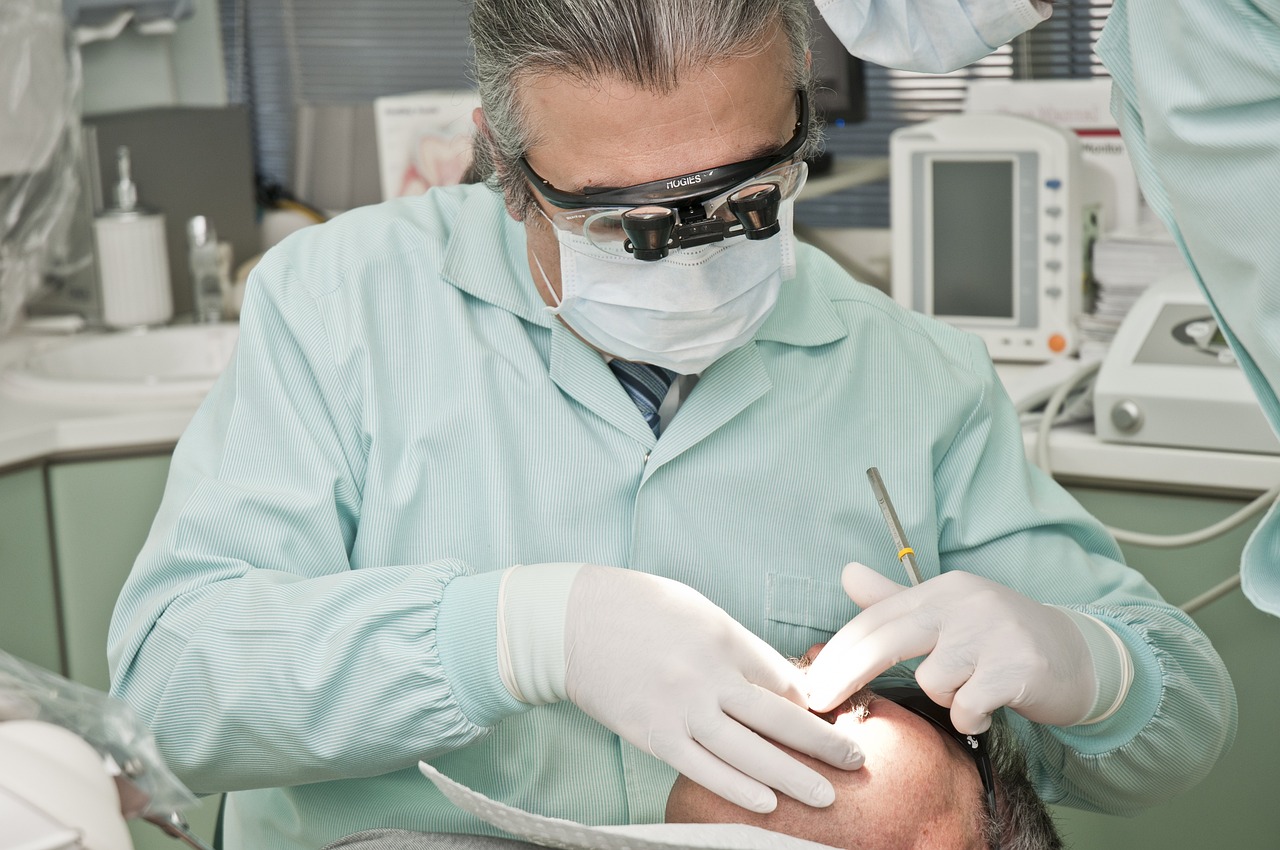
Health and Care
Understanding the health needs of Bloodhounds is essential for maintaining their overall well-being. These dogs are not just companions; they are loyal friends who depend on us to provide them with the best care possible. Regular veterinary check-ups, proper nutrition, and adequate exercise play a significant role in ensuring that your Bloodhound remains healthy and happy throughout their life. It's important to remember that the Bloodhound's unique physical characteristics, such as their droopy ears and loose skin, can make them susceptible to certain health issues.
One of the most common health concerns for Bloodhounds is hip dysplasia, a genetic condition that affects the hip joints and can lead to arthritis. This condition is particularly prevalent in larger breeds, and as a responsible owner, it's crucial to be aware of the signs, which may include difficulty standing up, limping, or reluctance to exercise. Regular vet visits can help catch these issues early, allowing for timely intervention and management.
Another issue to be mindful of is ear infections. Due to their floppy ears, Bloodhounds can be prone to moisture buildup, creating an ideal environment for bacteria and yeast to thrive. It's essential to regularly check and clean their ears to prevent infections. A simple routine of wiping their ears with a vet-recommended solution can go a long way in maintaining their ear health.
In terms of nutrition, providing a well-balanced diet tailored to their age, weight, and activity level is vital. Bloodhounds are known for their love of food, which can sometimes lead to obesity if not monitored. Owners should consult with their veterinarian to establish a proper feeding schedule and portion sizes. Below is a simple table to guide you on the recommended daily intake based on their weight:
| Weight (lbs) | Recommended Daily Intake (cups) |
|---|---|
| 80 - 90 | 3 - 4 |
| 90 - 110 | 4 - 5 |
Exercise is another critical aspect of Bloodhound care. These dogs are naturally energetic and require regular physical activity to stay healthy. Daily walks, playtime in a secure yard, and engaging in scent-tracking activities can help keep their minds and bodies active. Without enough exercise, Bloodhounds may become bored, leading to destructive behaviors. It's essential to find a balance that suits their energy levels while also considering their age and health status.
In summary, caring for a Bloodhound involves a combination of regular vet visits, a well-balanced diet, and ample exercise. By being proactive about their health needs, you can ensure your Bloodhound remains a happy and healthy member of your family for years to come.
- What are the common health issues in Bloodhounds? Bloodhounds are prone to hip dysplasia, ear infections, and obesity.
- How often should I take my Bloodhound to the vet? Regular check-ups are recommended at least once a year, or more frequently if your dog has existing health issues.
- What type of diet is best for a Bloodhound? A balanced diet tailored to their age, weight, and activity level is essential. Consult your vet for specific recommendations.
- How much exercise does a Bloodhound need? Bloodhounds require at least an hour of exercise daily, which can include walks, playtime, and scent-tracking activities.
Common Health Issues
Like any breed, Bloodhounds come with their own set of health challenges that potential owners should be aware of to ensure their furry friends live long, happy lives. One of the most common issues faced by Bloodhounds is hip dysplasia. This genetic condition occurs when the hip joint doesn't fit snugly into the hip socket, leading to discomfort, pain, and eventually arthritis. It's crucial for owners to monitor their dog's mobility and consult a veterinarian if they notice any signs of limping or difficulty in movement.
Another prevalent concern is ear infections. Bloodhounds have long, droopy ears that can trap moisture and debris, creating an ideal environment for bacteria and yeast to thrive. Regular cleaning of their ears is essential to prevent infections. Owners should check their dogs' ears weekly and consult a vet if they notice any signs of redness, swelling, or an unusual odor.
Additionally, Bloodhounds are prone to certain skin conditions, such as hot spots, which are localized areas of inflammation and infection. These can be caused by allergies, flea infestations, or excessive moisture. Keeping their coat clean and dry, along with regular grooming, can help minimize the risk of skin issues. Owners should also be aware of the signs of allergies, which may manifest as itching, redness, or hair loss.
Here’s a quick summary of the most common health issues faced by Bloodhounds:
| Health Issue | Description |
|---|---|
| Hip Dysplasia | A genetic condition affecting the hip joint, leading to pain and arthritis. |
| Ear Infections | Infections caused by moisture and debris trapped in their long ears. |
| Skin Conditions | Issues like hot spots due to allergies, fleas, or moisture. |
It's also essential to pay attention to their weight, as Bloodhounds can easily become overweight if not exercised properly. Obesity can lead to a range of health issues, including diabetes and joint problems. Regular vet check-ups and a balanced diet tailored to their age and activity level are vital for maintaining their health. By being proactive about these common health issues, Bloodhound owners can ensure their pets enjoy a vibrant and fulfilling life.
- What are the signs of hip dysplasia in Bloodhounds? Look for limping, difficulty getting up, or reluctance to climb stairs.
- How can I prevent ear infections in my Bloodhound? Regularly clean their ears and keep them dry.
- What should I do if my Bloodhound develops a skin condition? Consult your veterinarian for diagnosis and treatment options.
Exercise Requirements
When it comes to the Bloodhound, understanding their exercise requirements is not just a matter of keeping them fit; it's about keeping them happy and mentally stimulated. These dogs are known for their incredible sense of smell and tracking abilities, and their energy levels can be quite high. A Bloodhound that doesn’t get enough exercise can become bored, leading to destructive behaviors or excessive barking. Imagine a child cooped up in a room all day; they’d likely find ways to entertain themselves, often with less-than-desirable outcomes. Similarly, a Bloodhound needs regular physical activity to thrive.
Typically, a Bloodhound should engage in at least 1 to 2 hours of exercise each day. This can include a mix of activities such as walking, running, and playing fetch. However, it’s essential to remember that their exercise routine should not be one-size-fits-all. Factors like age, health, and individual temperament can influence how much exercise your Bloodhound needs. For example, a young, energetic Bloodhound will require more vigorous activity compared to an older dog who may prefer leisurely strolls.
Incorporating a variety of exercises can keep your Bloodhound engaged. Here are some ideas:
- Long Walks: Bloodhounds love to explore, so taking them on long walks allows them to sniff around and engage their natural instincts.
- Interactive Play: Games like fetch or tug-of-war can be great for bonding and physical exercise.
- Agility Training: Setting up an obstacle course in your backyard can provide mental stimulation and physical challenges.
Another important aspect to consider is the environment. Bloodhounds thrive in spaces where they can roam freely, so having a secure, fenced yard can be a significant advantage. However, if you live in an apartment or a smaller space, daily trips to a nearby park can suffice, as long as they get ample time to run and explore.
It’s also worth noting that Bloodhounds are scent hounds by nature. Incorporating scent work into their exercise routine can be incredibly fulfilling for them. You might consider activities like:
- Hiding treats around the house or yard for them to find.
- Taking them to scent trails or tracking classes.
In summary, the exercise requirements of a Bloodhound are not just about physical fitness; they are about nurturing their mind and spirit. By providing them with a balanced exercise routine that includes a mix of physical activities and mental challenges, you can ensure your Bloodhound leads a happy, healthy life. Remember, a well-exercised Bloodhound is a content and well-behaved companion.
Q: How much exercise does a Bloodhound need daily?
A: Bloodhounds typically require 1 to 2 hours of exercise each day, which can include walks, playtime, and mental stimulation activities.
Q: Can Bloodhounds adapt to apartment living?
A: Yes, Bloodhounds can live in apartments as long as they receive daily exercise and have opportunities to run and explore in secure areas.
Q: What are some good activities for keeping a Bloodhound mentally stimulated?
A: Activities like scent games, agility training, and interactive play can keep a Bloodhound mentally engaged and happy.
Frequently Asked Questions
- What is the temperament of a Bloodhound?
Bloodhounds are known for their gentle and affectionate nature. They are loyal companions who thrive on human interaction and are generally good with children and other pets. Their strong scent drive can sometimes lead them to be a bit stubborn, but with proper training, they can be well-behaved.
- How much exercise do Bloodhounds need?
Bloodhounds require regular exercise to stay healthy and happy. A good rule of thumb is to provide them with at least 1 to 2 hours of exercise each day, which can include walks, playtime, and mental stimulation activities. This helps prevent boredom and reduces the likelihood of behavioral issues.
- Are Bloodhounds easy to train?
Training a Bloodhound can be a bit of a challenge due to their independent nature and strong scent drive. However, using positive reinforcement techniques can make the process more enjoyable for both the dog and the owner. Patience and consistency are key when training these intelligent dogs.
- What are common health issues in Bloodhounds?
Bloodhounds can be prone to certain health problems, such as hip dysplasia and ear infections. Regular vet check-ups and being aware of these conditions can help owners take preventive measures and ensure their furry friend stays healthy.
- How should I socialize my Bloodhound?
Socialization is crucial for Bloodhounds. Early exposure to different people, environments, and other animals can help them develop a well-rounded temperament. Engaging in positive experiences during their formative months will promote good behavior and confidence in social settings.
- What should I consider before getting a Bloodhound?
Before bringing a Bloodhound into your home, consider their size, exercise needs, and grooming requirements. These dogs are large and need ample space to move around. Additionally, their unique coat may require regular grooming to keep it healthy and clean.

